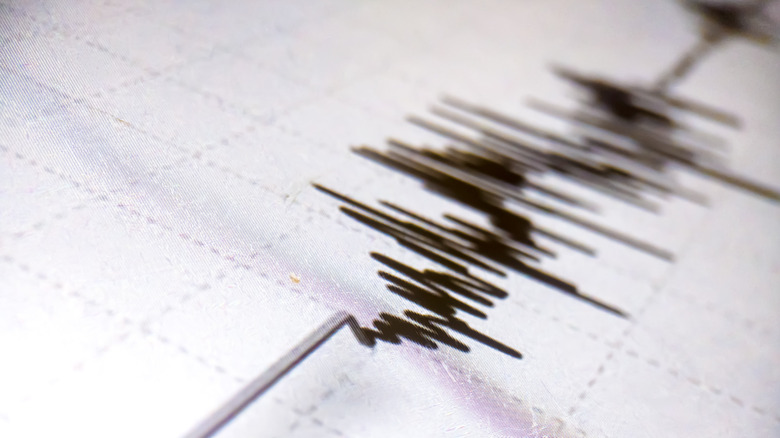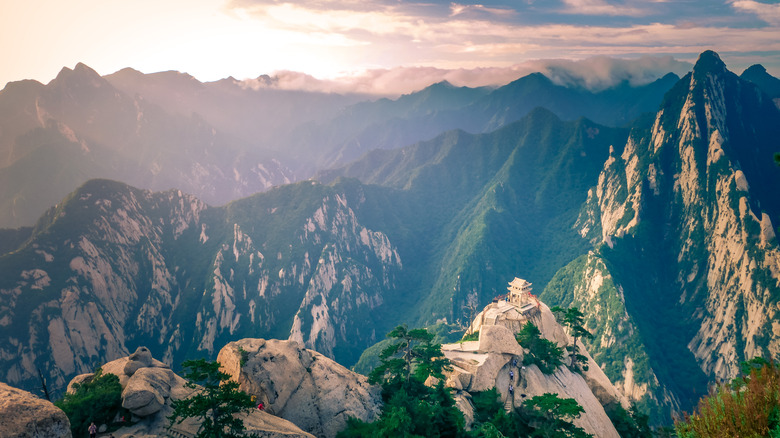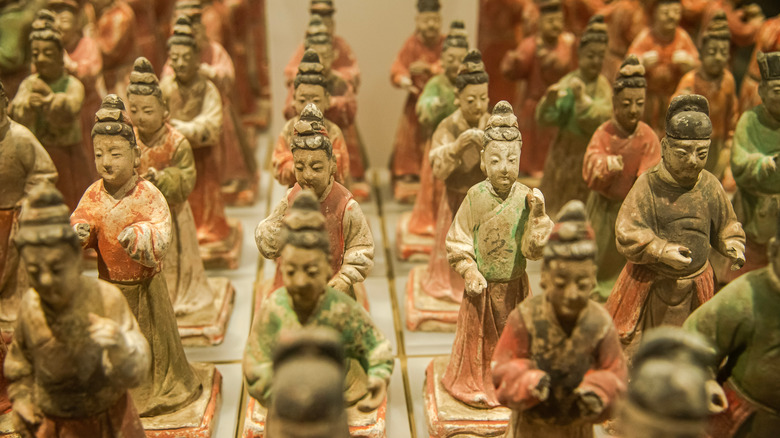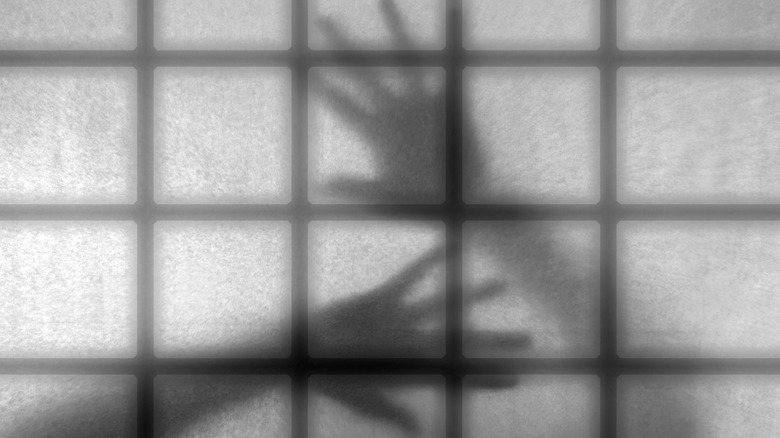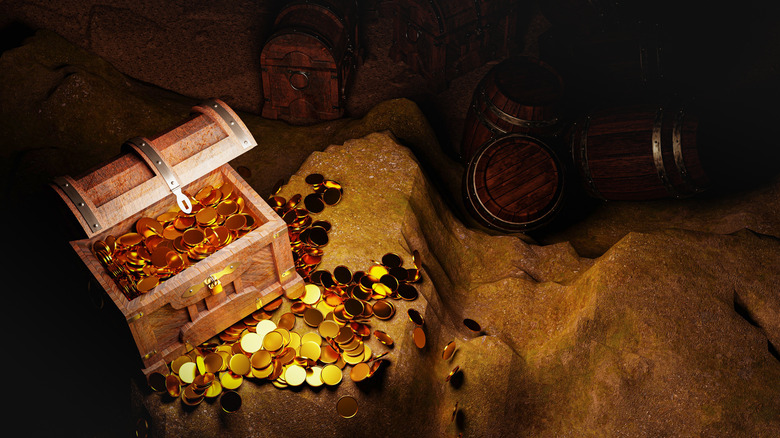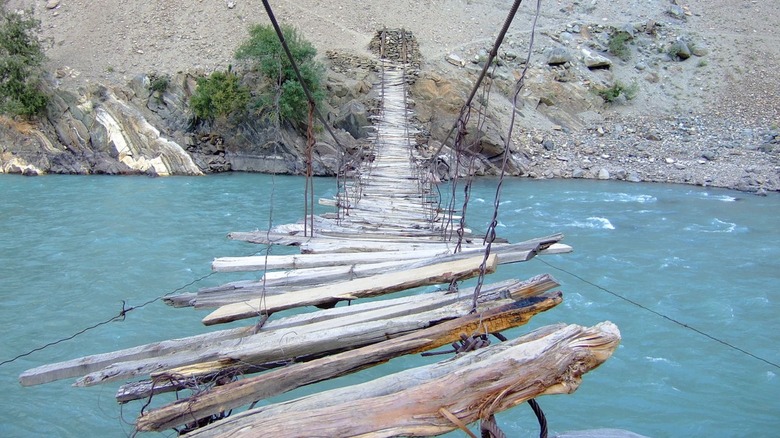
The Deadliest Earthquake In History That No One Talks About
Earthquakes, per Interesting Engineering, occur when the tectonic plates of the Earth’s outermost layer jostle around. There are a number of ways that regions prone to the devastating effects of these natural disasters battle to prepare themselves for such events. For example, base isolation is a means of separating the foundations of vulnerable buildings from the solid ground (or not-so-solid ground in these cases) to reduce the impact of seismic shifts. As explained by Interesting Engineering, the Transamerica Pyramid in San Francisco boasts a foundation that is more than 50 feet deep and brilliantly designed to move with the power of an earthquake rather than against it. The willow tree bends while the oak tree breaks, as the saying goes.
Regardless of humanity’s ingenious defenses, though, some earthquakes just cannot be defended against. In 1556, before some of these mechanical marvels were introduced, the earthquake with the highest death toll in human history struck the Chinese province of Shaanxi, per World Atlas.
According to Britannica, this devastating event took place on January 23, 1556. Although the region had reportedly suffered multiple powerful earthquakes before — 26 others were noted in local reports — this rather unknown yet tragic quake was unlike any that came before it or since. Between the Shaanxi and Shanxi provinces, the quake killed a shocking number of people — around 830,000 people lost their lives, a lot of whom were crushed to death by building collapses as the massive tremors shook the region.
An Earth-shattering legacy
Per World Atlas, the death toll of the Shaanxi earthquake was so high that approximately 60% of the population of the province and its neighboring region were killed, with an area of around 521 miles (or 840 kilometers) being all but leveled. Much of the province’s population lived in artificial caves called yaodongs built into hills or the ground itself. According to Ancient Origins, the prevalence of these living structures may have made their residents more vulnerable to the devastating power of the quake.
World Atlas noted that China was also the victim of the second-deadliest earthquake in human history: this time its Ningxia Province in December 1920. Approximately 273,400 lives were lost on that tragic day in a natural disaster that is estimated to have measured a 7.8 magnitude on the Richter scale.
Still, the Shaanxi quake was several times more formidable in terms of fatalities and is estimated to have reached 8 on the Richter scale. Britannica reports that the very landscape of the region rose and fell around it. World Atlas said the locations of rivers and mountains changed. Hills, gullies, and cracks were formed, changing the landscape. In the aftermath, survivors took to reconstructing their homes with wooden materials to be less prone to any future devastation (aftershocks are said to have continued for months after the initial quake). Nature is truly a formidable force.
The Shaanxi province was settled in the Neolithic age
The upheaval caused by the Shaanxi Earthquake of 1556 was like nothing modern humans have seen. History Collection reported that it caused fissures in the earth up to 66 feet deep and fires that burned for days. At the same time, the quake changed the course of rivers, incurring massive flooding and landslides. Per History Collection, “every single home and building was destroyed” in the city of Huazhou.
In fact, the quake was so violent that it even caused destruction and more death as far as 310 miles out from the epicenter. According to History Collection, the Shaanxi Earthquake was not the strongest earthquake to ever measure on the Richter scale, but it killed more people in recorded history than any other earthquake.
The area was so populated because according to Britannica, the northern parts of the Shaanxi province around the Wei River Valley are among the earliest settlements in China, spanning back to the Neolithic age, around 10,000 BCE.
There is still no way to predict earthquakes
At the time of the devastating quake, the Chinese people were experiencing a rich cultural life under the Ming Dynasty, according to the Metropolitan Museum. There were large-scale manufacturing industries in place that created porcelains and textiles, which in turn boosted the economy, leading to more people enjoying education and prosperity. Artists were breaking free from traditional methods of focusing on the technical to more expressive modes of painting things like landscapes. Woodblock printing meant books were widely produced. The people whose lives were upended by the Shaanxi earthquake were living in a sophisticated era.
Yet for all of their cultural sophistication, there was no way to predict or escape the planet’s tectonic plates from shifting. In fact, that problem still exists today. According to the United States Geological Survey, regardless of our modern technological advances nearly 500 years later, scientists still can not predict an earthquake — they can only calculate probabilities in that regard. But at least today, engineers plan ahead for natural disasters when designing new buildings in the hopes that such a devastating loss of life due to an earthquake will never happen again.

The Real Reason William Tecumseh Sherman Left The Military The First Time

The Truth About The Menendez Brothers' Sad Childhood

Why Some People Are Convinced We Live In A Multiverse

The Staggering Number Of People Killed Or Injured By The Aum Shinrikyo Cult

The Alleged Spy Technique The CIA Uses At Starbucks

The Messed Up History Of Halloween

Here's What Would Happen If The Moon Crashed On Earth

The Biggest Mistakes People Make When Meeting The Pope

Why Science Can't Figure Out How Old Saturn's Rings Are

Where These Legendary Rock Stars Are Buried
